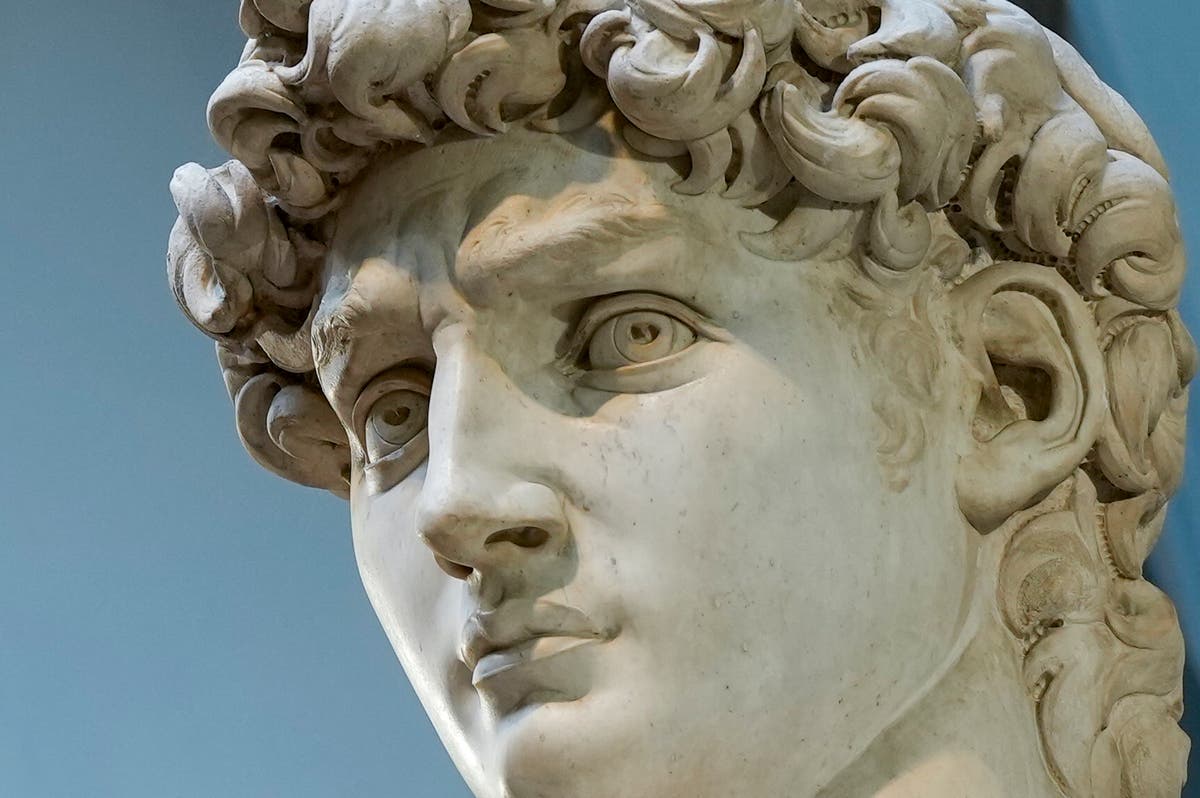Michelangelo’s David has been a towering figure in Italy since its completion in 1504. But in the current era of the quick buck, curators worry the marble statue’s religious and political significance is being diminished by the thousands of refrigerator magnets and other souvenirs sold around Florence focusing on David’s genitalia.
The Galleria dell’Accademia director, Cecilie Hollberg, has positioned herself as David’s defender since her arrival at the museum in 2015, taking swift aim at those profiteering from his image, often in ways she finds “debasing”.
In that way, she is a bit of a David herself, up against the Goliath of unfettered capitalism with its army of street vendors and souvenir shop operators hawking aprons of the statue’s nude figure, T-shirts of it engaged in obscene gestures, and ubiquitous figurines, often in Pop Art neon.
At Hollberg’s behest, the state’s attorney office in Florence has launched a series of court cases invoking Italy’s landmark cultural heritage code, which protects artistic treasures from disparaging and unauthorised commercial use. The Accademia has won hundreds of thousands of euros in damages since 2017, according to Hollberg.
…
The decisions challenge a widely held practice that intellectual property rights are protected for a specified period before entering the public domain – the artist’s lifetime plus 70 years, according to the Berne Convention signed by more than 180 countries, including Italy.
More broadly, the decisions raise the question of whether institutions should be the arbiters of taste, and to what extent freedom of expression is being limited.
“It raises not just legal issues, but also philosophical issues. What does cultural patrimony mean? How much of a stranglehold do you want to give institutions over ideas and images that are in the public domain?’’ said Thomas C. Danziger, an art market lawyer based in New York.



This is the best summary I could come up with:
In that way, she is a bit of a David herself, up against the Goliath of unfettered capitalism with its army of street vendors and souvenir shop operators hawking aprons of the statue’s nude figure, T-shirts of it engaged in obscene gestures, and ubiquitous figurines, often in Pop Art neon.
At Hollberg’s behest, the state’s attorney office in Florence has launched a series of court cases invoking Italy’s landmark cultural heritage code, which protects artistic treasures from disparaging and unauthorised commercial use.
The decisions challenge a widely held practice that intellectual property rights are protected for a specified period before entering the public domain – the artist’s lifetime plus 70 years, according to the Berne Convention signed by more than 180 countries, including Italy.
Court cases have debated whether Italy’s law violates a 2019 European Union directive stating that any artwork no longer protected by copyright falls into the public domain, meaning that “everybody should be free to make, use and share copies of that work”.
Based on Hollberg’s success and fortified by improved search engine technology, the private entity that is the custodian of Florence’s landmark Cathedral of Santa Maria del Fiore has started going after commercial enterprises using the famed dome for unauthorised, and sometimes denigrating, purposes – including men’s and women’s underwear.
So far, cease-and-desist letters have been enough to win compliance without turning to the courts, adding an extra half a million euros (£427,000) a year to revenues topping €30m (£25.7m), Luca Bagnoli, president of the Opera di Santa Maria del Fiore, told the AP.
The original article contains 1,069 words, the summary contains 259 words. Saved 76%. I’m a bot and I’m open source!